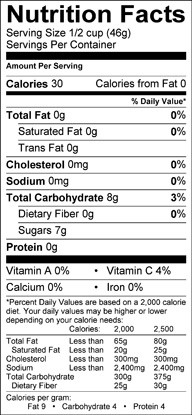Grapes and the science behind them
Grapes can be eaten fresh or used for making wine, juice, jam, jelly, raisins, vinegar and grape seed oil.

It’s time for grapes in Michigan! Enjoy some Michigan grapes, and learn more about this fruit that has been cultivated for thousands of years. Learning more about the foods we eat, how they grow, where they come from and teaching children a little plant science can make for a great activity for young and old. Grapes can be eaten fresh or used for making wine, juice, jam, jelly, raisins, vinegar and grape seed oil.
Fun facts about Concord grapes
- Grapes are botanically classified as berries.
- These vigorous plants are winter hardy and can produce over 20 pounds of fruit per vine per year, and often live for more than 40 years.
- Concord grapes are a variety of Vitis labrusca.
- Concord grapes are named after the city of its origin: Concord, Massachusetts.
- Ephraim Wales Bull first cultivated them in 1849. He wanted to create a hardy vine that could survive the cold climate of Massachusetts.
- Concord grapes are one of the oldest domestically cultivated grapes still grown today.
- These blue-skinned grapes are responsible for making the famous and popular Concord grape jelly and have become a major crop throughout the United States.
- Concord grapes are an excellent source of vitamin C and the phytonutrient Resveratrol, an important chemical in maintaining heart health.
- Grape juice was first made by prohibitionist Thomas Welch, making his famous grape juice as an alternative for communion wine.
- Michigan, New York, Ohio, Pennsylvania and Washington are major producers of Concord grapes.
- About 19 Concord grapes have about 30 calories.

- Concord grapes, grape juice and red wine may also help maintain grey matter as you age. That means an improvement in brain function and a reduced risk for declines in memory.
- Purple foods such as Concord grapes, blueberries and plums can neutralize free radicals.
As an interesting side note: A by-product of making wine is cream of tartar. This is made by using an acidic found in the sediment left behind in barrels after the wine has been fermented. It gets purified into the powdery white substance we use in baking. A pinch of cream of tartar added to egg white while they are being whipped will strengthen the matrix of bubbles and help prevent the egg foam from collapsing too quickly. The tartar also helps to increase the volume of the egg foam and keeps them bright and white.
Grape Juice recipe
Every year, I enjoy making 40-60 quarts of grape juice to be enjoyed throughout the winter. Making the juice has become a family event from picking, preparing and canning, but most of all enjoying the sweet product of our labor. Here is the recipe I use.
Directions
- In sterilized jar, place 1-1 ½ cups Concord grapes.
- Add 1/3 cup sugar.
- Fill to top with boiling water.
- Seal jars at once with 2 piece lids. Process in water-bath canner for 10 minutes. Remove from canner (cover with a towel). Next day, remove metal lid-bands and label with date and contents.
- Let juice stand 3 to 4 weeks before using.
- Strain juice from grapes and use juice.
More information
For more information on the history of Concord grapes, grape juice and growing grapes in Michigan, see:
- History of grapes, juice, jams and jellies, Concord Grape Association
- “Dr. Welch and the Great Grape Story” by Mary Lou Carney – a kids book about grape juice
- Growing grapes in the backyard, Michigan State University Extension
- MSU Extension’s Grapes website



 Print
Print Email
Email

